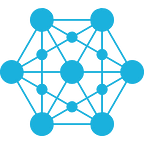There’s endless hype about Sigfox, LoRA, NB-IoT, LTE-m, 5G, blockchain, IPV6, sensor design, machine vision and deep neural networks; all driving competition for every layer in the IoT stack — from chipset and module vendors to networks and platform services. The consensus regarding ARPUs (Average Revenue Per User) is that $1.00 per device/per month, is the sweet spot to drive scalable adoption. This pricing opens up new markets and new business models. It drives innovation and unlocks the enormous potential to digitise, automate and improve trade, medicine, healthcare, manufacturing, agriculture, energy systems and our environment.
The advancing IoT (Internet of Things) could have an $11.1 trillion-dollar impact on economies. That’s what McKinsey forecast and a large slice of the pie is asset utilisation, supply chain and logistics: coming in at $1.9 trillion and $2.1 trillion respectively. When we consider the aforementioned markets, there is a longstanding problem within the theoretical framework. Pricing models are a blockade to scalable adoption. McKinsey state the full potential of the IoT will only be realised when lower costs and robust data analytics evolve. We can’t have robust data analytics without data, so a fundamental shift is required.
Cost Dynamics
It’s abundantly clear that current pricing models are a major spanner in the works. In today's market, you will pay anywhere between $8 and $16 per device/per month, which is ok if you’re looking to digitise diamonds or track a Rembrandt in transit. The backbone of global supply chains and logistics is made up of 13.5 billion MHEs (material handling equipment), and these things are responsible for delivering food, medicine, electronic equipment and chemicals. Without a radical shift in technology and pricing, these things cannot make the digital leap to the internet, so the internet of things is not realistic for billions of things. It’s just hype.
One of the keys to unlocking the trillions of dollars that McKinsey is forecasting will come from the bottom up. SME’s and high-quality engineering teams can innovate quickly, so they are in a position to go after markets that are ripe for digital transformation. Unwieldy, big tech monoliths have layers of infrastructure, that each bear the burden of cost, which is pushed back down to the customer — creating a roadblock to rapid adoption cycles. Major opportunities exist for SMEs to capture their share of the market by deploying scalable solutions.
The existing problem will not be solved by developing incremental changes to the available technologies. Moors Law ran its course and chipset, module and network providers cannot subsidise the market to the extent it requires. The market needs to change the state of play and take innovative leaps in order to provide scalable connectivity for the IoT.
We are at the forefront of this evolution and have identified methods to disrupt the IoT communication layer. Modifications to existing chipset and communication protocols will enable peer-to-peer computing at the edge. And synthesising current overlay networks will allow decentralisation at the application layer — which will help scale IoT networks. Decentralisation of the IoT stack will conceive a fundamental shift in the nature of how networks organise and operate. We are not reinventing the wheel, just synthesising parts of it to expand functionality and open doors to cost-effective connectivity.
The Holy Grail
After several years of cost and power engineering on the IoT stack, Ping has a current ARPU of approx. $3.00pcm. The introduction of PingNET is going to reduce this cost, so we hit that Holy Grail of $1.00pcm. This ARPU covers a device with connectivity to a decentralised network, data management and data orchestration. Decentralisation will forge the path to a truly scalable Internet of Things. What naturally follows is an abundance of data that can optimise global supply chains, unlock enormous value, enable new marketplaces and business models, and ultimately, transform economies. With all that said, until the reality of widely available and practical pricing models emerge, the Internet of Things will remain hyped-up nascent field.
About Ping
PingNET is a Decentralised Transmission Network for the Internet of Things. The core of the stack is a P2P protocol that enables a peer-to-peer data marketplace where anyone or any — ‘thing’ that has a network connection can get paid for sharing connectivity, and enterprises can rapidly deploy high-volume and cost-effective IoT edge networks. PingNET taps into the data reserves, bandwidth and computing power contained at the edge, to enable the flow of secure, encrypted data from edge devices to IoT platforms, blockchains and beyond. The protocol creates the building blocks for new cost savings, revenue streams and a truly scalable IoT network.
By decentralising the edge, PingNET opens the door to business model innovation for everyone, especially device manufacturers, asset tracking companies, Industry 4.0 integration, logistics and supply chain groups as well as IoT platform vendors and organisations.
